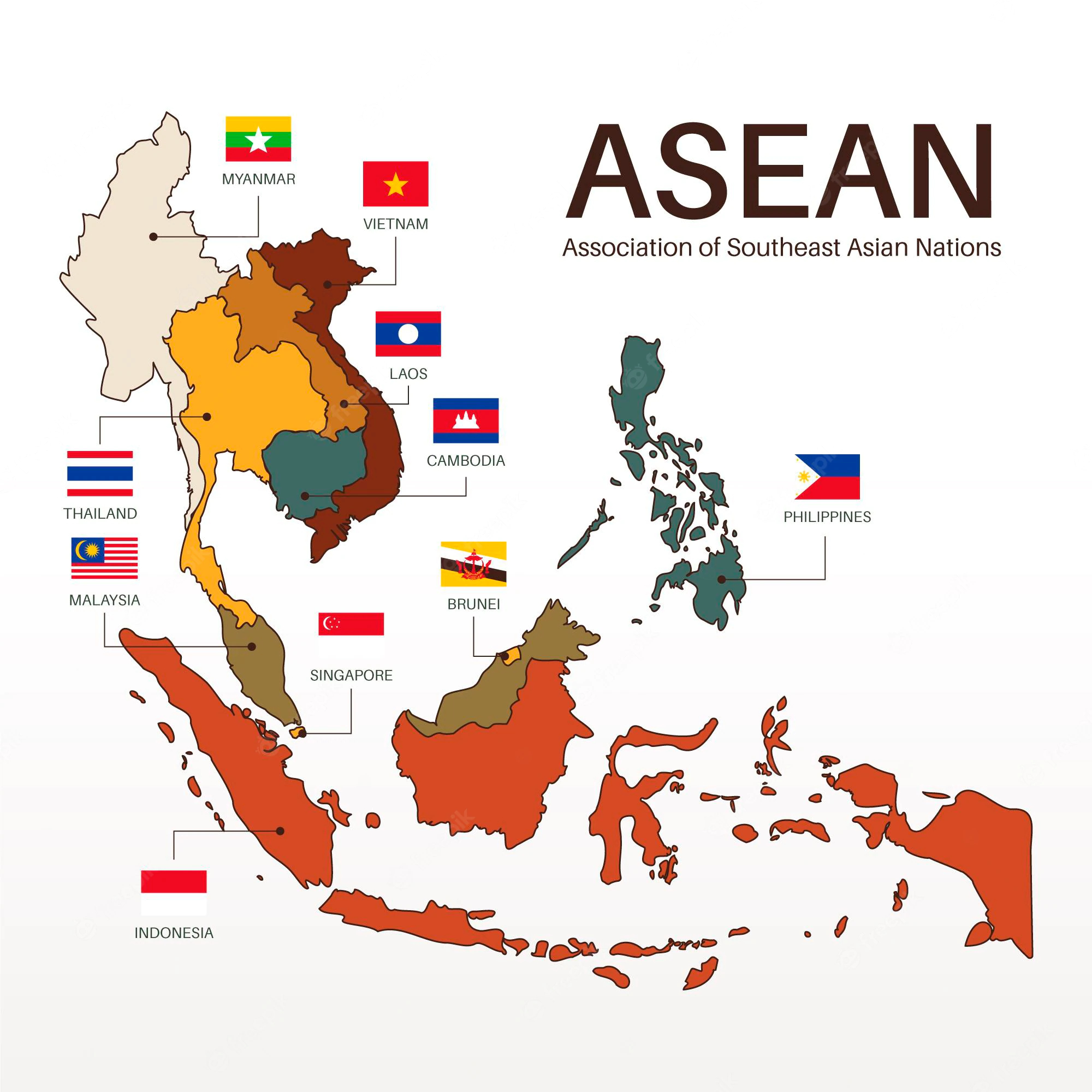- Courses
- GS Full Course 1 Year
- GS Full Course 2 Year
- GS Full Course 3 Year
- GS Full Course Till Selection
- MEP (Mains Enrichment Programme) Data, Facts
- Essay Target – 150+ Marks
- Online Program
- GS Recorded Course
- NCERT- First Ladder
- Polity
- Geography
- Economy
- Ancient, Medieval and Art & Culture AMAC
- Modern India, Post Independence & World History
- Environment
- Governance
- Science & Technology
- International Relations and Internal Security
- Disaster Management
- Ethics
- Current Affairs
- Indian Society and Social Issue
- CSAT
- 5 LAYERED ARJUNA Mentorship
- Public Administration Optional
- ABOUT US
- OUR TOPPERS
- TEST SERIES
- FREE STUDY MATERIAL
- VIDEOS
- CONTACT US
Singapore is India’s bridge to Southeast Asia
Singapore is India’s bridge to Southeast Asia

The Indian Prime Minister’s visits to Singapore and Brunei represent a strategic moment in India’s engagement with ASEAN, focusing on expanding cooperation in defense, technology, and sustainability.
- The visit highlights India's intent to deepen its ties with ASEAN, leveraging Singapore's important role in the region.
- Singapore serves as a solid diplomatic anchor for New Delhi.
- With a bilateral relationship deeply rooted in historical ties, economic synergies, and a shared vision for regional stability and development, Singapore occupies a place of primacy in India’s Act East policy.
Significance of ASEAN for India:
|
Historical Context and Partnership Evolution
|
Economic Powerhouse and Gateway to Southeast Asian Markets
- Market Access: ASEAN offers access to a market of over 650 million people with a combined GDP of USD 3.2 trillion.
- Trade: The ASEAN-India Free Trade Area (AIFTA) boosted bilateral trade to USD 110.39 billion in 2021-2022.
- Investment: Singapore is India's largest trade partner in ASEAN and the 6th largest worldwide, with FDI valued at USD 11.77 billion.
Strategic Counterbalance
- Regional Stability: ASEAN’s partnership aligns with India’s 'Act East Policy' and ASEAN’s 'Outlook on the Indo-Pacific.'
- Geopolitical Forums: India engages in forums like the East Asia Summit and ASEAN Regional Forum to assert its role in regional security and promote a rules-based international order.
Connectivity Catalyst
- Infrastructure Projects: Initiatives like the India-Myanmar-Thailand Trilateral Highway and the Kaladan Multi-Modal Transit Transport Project enhance regional connectivity.
- Digital Connectivity: Focus on 5G and cybersecurity cooperation strengthens links and supports integration with Southeast Asia.
Cultural Confluence
- Shared Heritage: Initiatives like the ASEAN-India Artists' Camp and Music Festival celebrate historical and cultural ties.
- Academic Exchanges: The ASEAN-India Network of Universities fosters academic and cultural exchanges.
Technological Synergy
- Start-up Ecosystem: The ASEAN-India Start-up Festival and the ASEAN-India Science and Technology Development Fund support collaboration in fintech, e-commerce, and AI.
- Innovation: Cooperation in emerging technologies such as blockchain and cybersecurity.
Maritime Security Collaboration:
- Strategic Importance: ASEAN’s role in maritime security aligns with India's SAGAR doctrine, focusing on piracy, illegal fishing, and disaster management.
- Joint Exercises: The ASEAN-India Maritime Exercise held in the South China Sea in May 2023.
Energy Security and Sustainability:
- Energy Cooperation: ASEAN’s energy-rich members offer diversification opportunities for India, while India's expertise in solar power supports ASEAN’s sustainability goals.
- Renewable Energy: Joint initiatives like the ASEAN-India High-Level Conference on Renewable Energy exemplify this collaboration.
Supply Chain Resilience:
- Post-COVID Realignment: The pandemic underscored the need for resilient supply chains. Cooperation in pharmaceuticals, electronics, and automobiles is crucial.
- SCRI: The Supply Chain Resilience Initiative (SCRI) involving India, Japan, and Australia aims to reduce dependence on China.
Key Concerns in India-ASEAN Relations:
- Trade Imbalance:
- Surge in Deficit: India’s trade deficit with ASEAN has more than doubled since the implementation of the AIFTA in 2010.
- Trade Figures: In FY 2022-2023, India’s exports to ASEAN were USD 44.04 billion, while imports reached USD 87.58 billion.
- Infrastructure Connectivity:
- Project Delays: Key projects like the India-Myanmar-Thailand Trilateral Highway and the Kaladan Multi-Modal Transit Transport Project face significant delays.
- Geopolitical Balancing - Navigating the China Factor:
- Complex Dynamics: ASEAN countries face challenges balancing Chinese economic inducements with security concerns. India's role in the South China Sea and the Quad Alliance receives mixed responses.
- Regulatory Hurdles:
- Non-Tariff Barriers: Differences in regulatory standards and procedures create barriers. For instance, divergent food safety standards hinder agricultural trade.
Reasons for Persistent Trade Deficit with ASEAN:
- Tariff Asymmetry:
- Unequal Reductions: The AIFTA has led to asymmetric tariff reductions, disadvantaging India. India has reduced tariffs on 74% of its tariff lines, while ASEAN has reciprocated on 56%.
- Non-Tariff Barriers:
- Regulatory Challenges: Complex regulatory requirements and technical barriers hinder Indian exports. For example, Indian pharmaceuticals face lengthy registration processes.
- Manufacturing Competitiveness:
- Productivity Gap: ASEAN countries, particularly Vietnam and Thailand, have higher productivity levels, impacting sectors like electronics and machinery.
- Missing Link in Regional Value Chains:
- Limited Integration: India's limited participation in ASEAN-centric regional value chains affects its ability to capture value-added exports.
- Services Trade Barriers:
- Restricted Access: Barriers to services trade, including language and professional certification issues, limit India’s ability to offset the goods trade deficit.
- Rules of Origin Exploitation:
- Trade Deflection: Weak rules of origin in the AIFTA allow non-ASEAN countries to route exports through ASEAN, inflating the trade deficit.
Measures to Enhance India-ASEAN Relations:
- Recalibrating the ASEAN-India Free Trade Agreement (AIFTA):
- Balanced Tariffs: Negotiate more balanced tariff reductions, particularly in sectors where India is competitive, such as pharmaceuticals and textiles.
- Enhancing Infrastructure Connectivity:
- Accelerate Projects: Speed up key projects like the India-Myanmar-Thailand Trilateral Highway and propose a comprehensive Connectivity Master Plan aligned with ASEAN’s Master Plan on Connectivity 2025.
- Boosting Manufacturing Competitiveness:
- Sector-Specific Interventions: Extend the Production Linked Incentive (PLI) scheme to more industries and propose joint manufacturing initiatives with ASEAN countries.
- Enhancing Energy Cooperation:
- Energy Partnership: Propose an ASEAN-India Energy Partnership focusing on renewable energy, technology cooperation, and joint research on emerging energy solutions.
- Enhancing Strategic and Defense Cooperation:
- Capacity Building: Increase assistance in maritime domain awareness, anti-piracy, and humanitarian aid. Consider joint defense production initiatives with advanced ASEAN nations.
- Aligning on Climate Change and Sustainability:
- Green Partnership: Propose an ASEAN-India Green Partnership focusing on climate change mitigation, renewable energy, and sustainable development.
Leveraging Singapore for Enhanced ASEAN Relations:
- Economic Gateway:
- Expansion: Use Singapore as a base for Indian companies to expand into ASEAN markets and leverage the Comprehensive Economic Cooperation Agreement (CECA).
- Maritime Security Cooperation:
- Joint Exercises: Expand naval exercises like SIMBEX and collaborate on maritime security initiatives within ASEAN.
- Technology and Innovation Hub:
- Tech Partnerships: Develop joint initiatives in emerging technologies and use Singapore as a testbed for tech innovations.
- Supply Chain Resilience:
- Logistics Collaboration: Utilize Singapore’s expertise in logistics to enhance connectivity and ensure the free flow of goods across ASEAN.
Conclusion
India's strategic engagement with ASEAN, highlighted by deepening ties with Singapore, underscores a significant shift towards more comprehensive economic, technological, and security collaborations. Addressing trade imbalances and expanding cooperation in key areas will be essential for maximizing the potential of this dynamic relationship.




